The free film program — ‘Fairy Tales Cinema: Truth, Power and Enchantment’ — accompanying the ticketed ‘Fairy Tales‘ exhibition at Brisbane’s Gallery of Modern Art (GOMA) until 28 April 2024 examines how cinema shapes our understanding of fairy tales, and how their structure in turn changes how cinema tells stories. Curator Sophie Hopmeier picks five unmissable films each month during the program.
View the ‘Fairy Tales’ Film Program
Until 28 April 2024
Gallery of Modern Art, Brisbane
The program examines five thematic strands: how fairy tales are used to interrogate societal expectations about age and gender, in which women progress through the stages of ‘maiden’, ‘mother’ and ‘crone’; what makes a ‘happy ending’, and how our desires are shaped by societal and economic circumstances; how landscapes have been framed, constructed and edited to express the porous line between being lost and finding oneself; how archetypal tropes of transformation in fairy tales are used by filmmakers to connect with questions of identity; and how film, as a relatively new narrative medium, has engaged with older oral and literary forms of storytelling, making the wondrous and impossible visible.
RELATED: Journey through the Fairy Tales exhibition with our weekly series
‘The Wizard of Oz‘ screens at the Australian Cinémathèque, GOMA

In the 1890s, when German producer and director Oskar Messter first used the nascent technology of the cinematograph to record performances of ‘Rapunzel’ and ‘Hansel and Gretel’ and George Méliès’s experimentation with film brought enchantment to life on screen, the fairy tale found a new mass medium through which to proliferate.1 Today, a century and a quarter later, The International Fairy-Tale Filmography lists almost 5000 titles.2 Some films, such as Jean Cocteau’s La Belle et la Bête (Beauty and the Beast) 1946 or Victor Fleming’s The Wizard of Oz 1939, have become touchstones for the global imagination of older stories and literary texts. Many others, including those presented in QAGOMA’s Australian Cinémathèque for ‘Fairy Tales’, extend beyond the familiar literary canon to explore how fairy tales help make sense of the world in different sociopolitical contexts. There is a tension between the schematic quality of fairy tales, which are constantly being retold in new ways, and the unchangeable concrete detail of filmic images, which threatens to fix how we imagine stories in perpetuity.3 However, it is in the expanded field of fairy tale films, and how cinema fractures, recontextualises or blends these stories with other traditions, that the power and mutability of fairy tale images, and the possibilities they offer cinema to challenge social norms, becomes clear.4
‘Mirror Mirror‘ 2012 screens at the Australian Cinémathèque, GOMA

‘Rabbit suit’ costume from ‘Mirror Mirror’ 2012 on display at GOMA

The continuation and reinvention of fairy tales as a living form relies on the imagination of both the teller and the receiver. The ‘folk’ tradition of oral storytelling is ‘of the people’, dependent on the individuals who repeat stories over time and across space. Unlike more elaborate, rigid and detailed forms of storytelling, such as legend or religious lore, the fairy tale form is sparse and fluid. Characters are defined simply, in terms of their social roles (woodcutter or stepmother) or appearance (giant, crone, or Little Red Riding Hood). These elemental tropes leave room for the audience to project their own reality or fantasy into the story. Every telling or hearing relies on us to extrapolate outwards, building complete and unique worlds from the breadcrumbs provided by the fairy tale. As such, every iteration of the story will be different.5
‘Alice‘ screens at the Australian Cinémathèque, GOMA
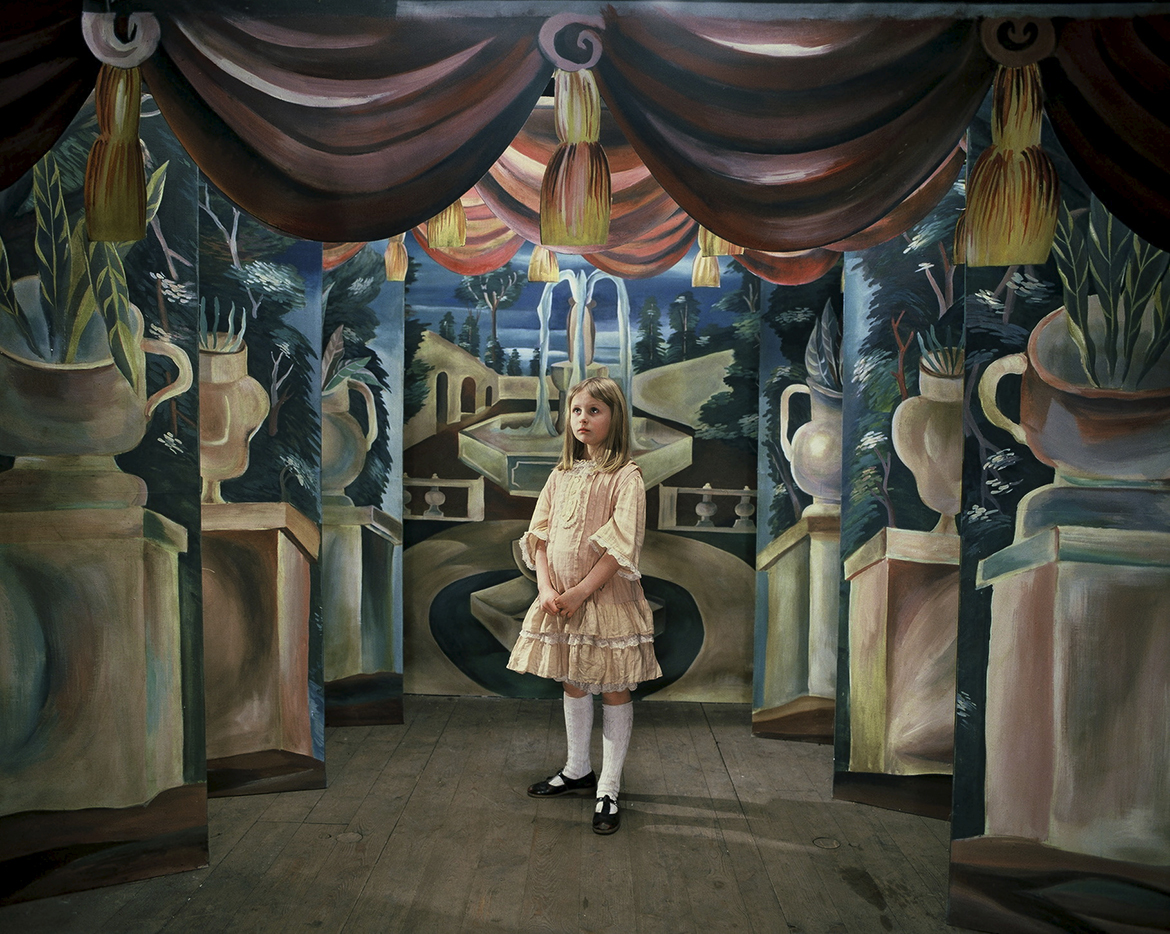
Whereas oral traditions persist through varied repetition, cinema replicates the stories it tells the same way, wherever it is viewed. Like print before it, cinema’s power as an egalitarian mass media lies in its mechanical, and now digital, reproducibility.6 People around the world, and from different socioeconomic backgrounds, can share an identical experience of an image reproduced in a book or film, which is neither singular nor ‘unique’, but which connects individuals to communal narratives. Unlike oral and even literary fairy tales, stories told on screen render every image in dizzying detail.7 This, too, presents a shift in the way we engage with stories. We are provided with a full banquet of descriptive information, rather than only a breadcrumb, becoming consumers of an existing mise‑en-scène, instead of active creators. The dominance of the Euro-American film industry and its global distribution systems simultaneously creates identification with a community of other viewers (present or imagined), while ensuring that most of the fairy tales told on screen are drawn from a hegemonic set of popular Western stories.8 For the fairy tale film, this is not only a challenge, but also a source of power.
‘Pans Labyrinth‘ screens at the Australian Cinémathèque, GOMA
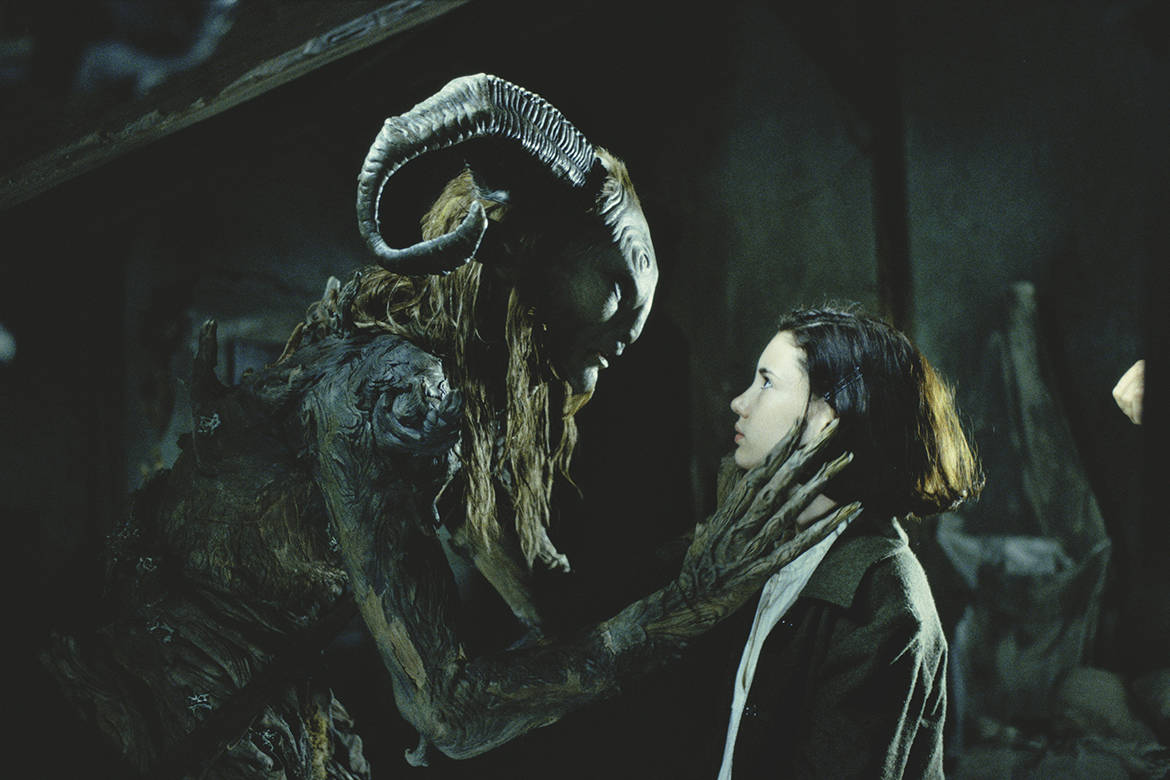
While cinematic reproduction and distribution threatens to stifle something of the living nature of the fairy tale, it also galvanises an increasingly shared set of fairy tale references and images, which filmmakers can mobilise to subvert the status quo. The iconic quality of fairy tales, coupled with our hardwired pleasure in making connections between crisp but shallow tropes, mean that filmmakers only need to provide us with the most cursory of fragments — woods, mirrors, apples, a rise from rags to riches, jealous stepmothers — to evoke an expectation of well-trodden narratives.9 Many films in the exhibition’s screening program do not simply enact older tales, but rather harness our associations with them, and capacity to extrapolate the whole from the part, in order to challenge our expectations, speak truth to power or point towards possible futures.
Dr Sophie Hopmeier is ‘Fairy Tales’ Assistant Curator and Assistant Curator, Australian Cinémathèque, QAGOMA
This edited extract from ‘Fairy-Tale Films: From Breadcrumb to Banquet, and Back Again’ was originally published in Fairy Tales in Art and Film, Queensland Art Gallery | Gallery of Modern Art, 2023
Endnotes
1 Katharina Loew, ‘The spirit of technology: Early German thinking about film’, New German Critique, no. 122, summer 2014, p.134; Jack Zipes, The Enchanted Screen: The Unknown History of Fairy-Tale Films, Routledge, New York, 2011, p.33.
2 The University of Winnipeg, The International Fairy-Tale Filmography, <iftf.uwinnipeg.ca/>, viewed May 2023.
3 Jessica Tiffin, Marvelous Geometry: Narrative and Metafiction in Modern Fairy Tale, Wayne State University Press, Detroit,
Mich., 2009, p.23.
4 I draw on Rosalind Krauss’s idea of ‘the expanded field’, whereby a recognised form, such as fairy tales or sculpture, can be seen as part of a larger domain of related, but differently structured, possibilities. Rosalind Krauss, ‘Sculpture in the expanded field’, October, vol. 8, spring 1979, p.38.
5 Gregory Bateson, Steps to an Ecology of Mind, University of Chicago Press, Chicago and London, 2000, p.131.
6 Walter Benjamin, Illuminations, trans. H Zohn, Schocken Books, New York, 2007, pp.223–4.
7 Marina Warner, Once Upon a Time: A Short History of Fairy Tale, Oxford University Press, Oxford, 2014, p.165.
8 Benedict Anderson, Imagined Communities, Verso, London, 2006, p.44.
9 Terence Cave, Thinking with Literature: Towards a Cognitive Criticism, Oxford University Press, Oxford, 2016, p.79.
Fairy Tales: The exhibition
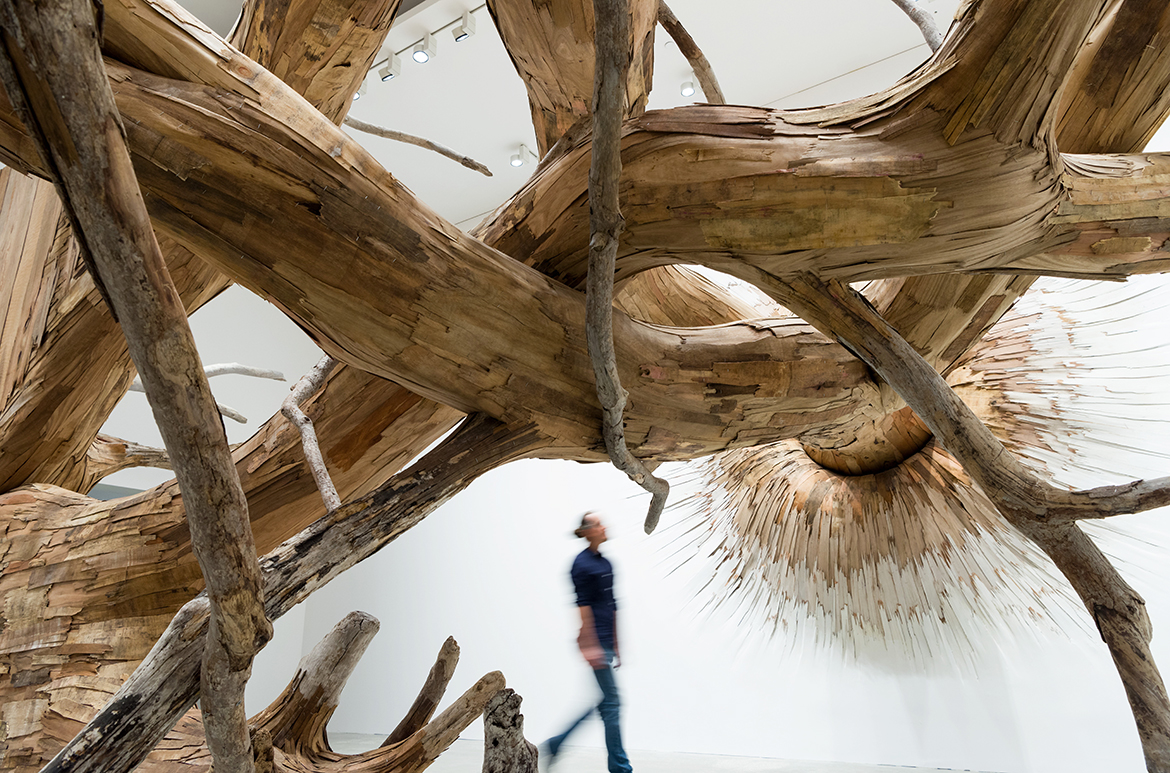
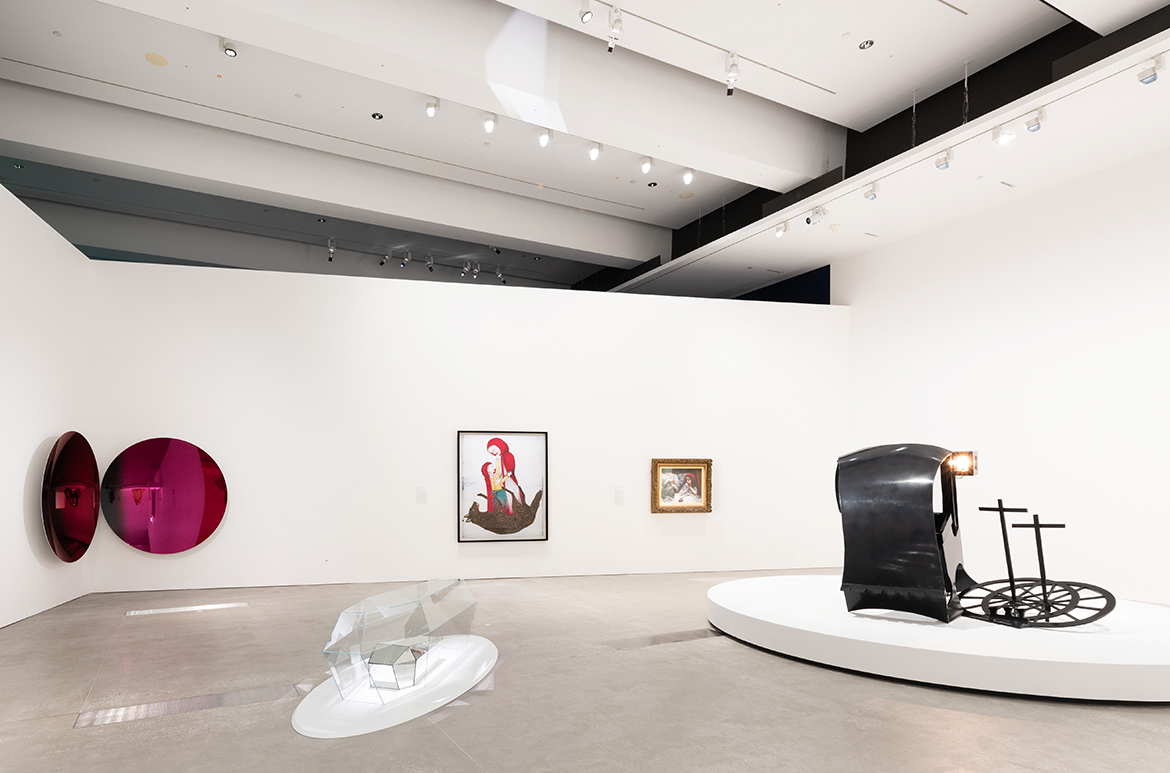
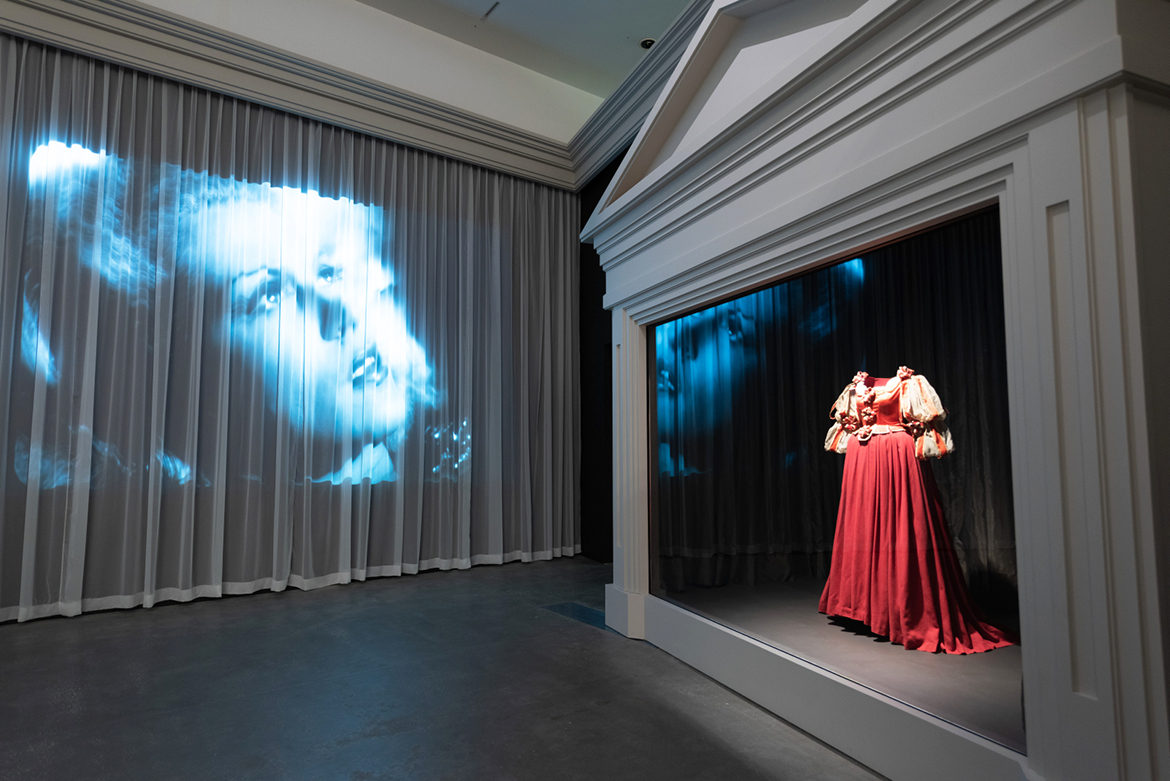
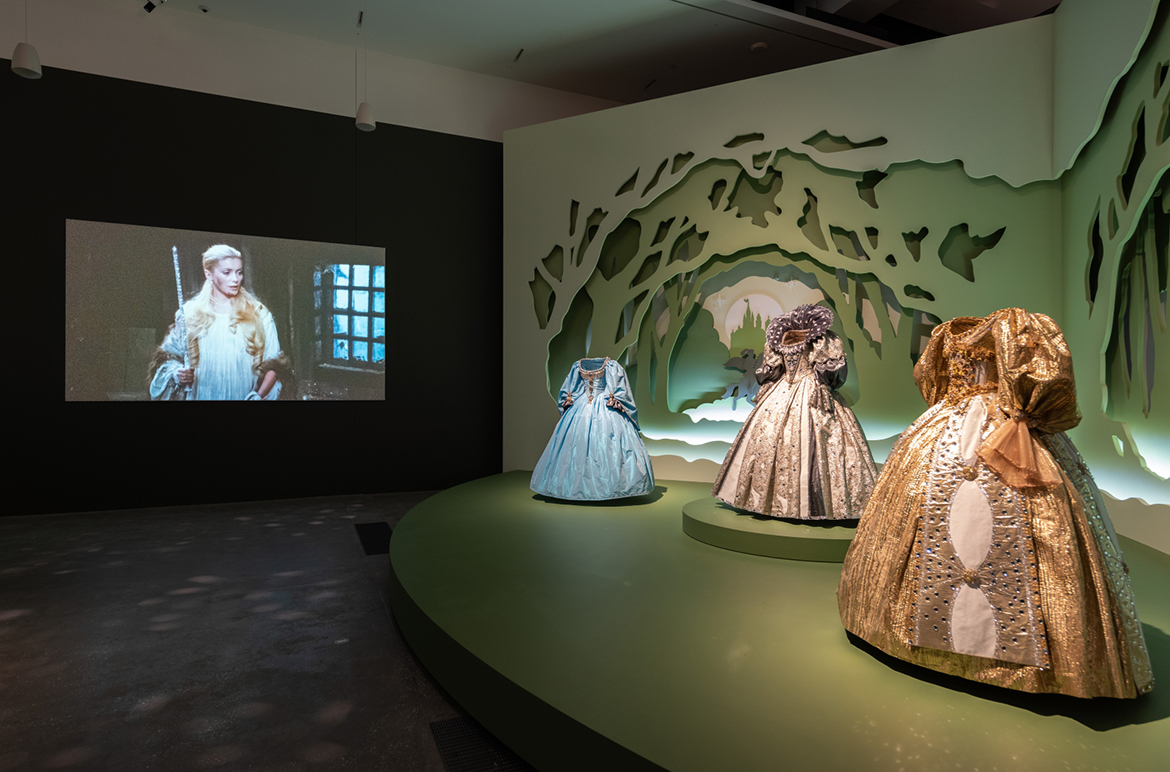
The ‘Fairy Tales’ exhibition at Brisbane’s Gallery of Modern Art (GOMA) until 28 April 2024 explores our fascination with this much-loved genre through a multifaceted telling of these tales in art, film and design. It explores the archetypal figures and situations we identify whenever we are reminded of fairy tales, whether reading them to children or seeing them reappear through the looking glass of contemporary culture. Through painting, sculpture, photography, installation, cinema and film props, costumes and design, the exhibition reminds us how visual storytellers summon up timeworn narratives to entrance, delight and disconcert their audiences. Magic, enchantment and transformation remain amazing tools to process and respond to real‑world challenges.
Buy Tickets to ‘Fairy Tales’
Until 28 April 2024
Gallery of Modern Art, Brisbane
The ‘Fairy Tales’ exhibition is at Brisbane’s Gallery of Modern Art (GOMA), Australia from 2 December 2023 until 28 April 2024.
‘Fairy Tales Cinema: Truth, Power and Enchantment‘ presented in conjunction with GOMA’s blockbuster summer exhibition screens at the Australian Cinémathèque, GOMA from 2 December 2023 until 28 April 2024.
The major publication ‘Fairy Tales in Art and Film’ available at the QAGOMA Store and online explores how fairy tales have held our fascination for centuries through art and culture.
From gift ideas, treats just for you or the exhibition publication, visit the ‘Fairy Tales’ exhibition shop at GOMA or online.

The Australian Cinémathèque
The Queensland Art Gallery | Gallery of Modern Art (QAGOMA) is the only Australian art gallery with purpose-built facilities dedicated to film and the moving image. The Australian Cinémathèque at GOMA provides an ongoing program of film and video that you’re unlikely to see elsewhere, offering a rich and diverse experience of the moving image, showcasing the work of influential filmmakers and international cinema, rare 35mm prints, recent restorations and silent films with live musical accompaniment by local musicians or on the Gallery’s Wurlitzer organ originally installed in Brisbane’s Regent Theatre in November 1929.
Featured image: Production still from The Company of Wolves 1984 / Director: Neil Jordan / Image courtesy: Park Circus/ITV Studios / Photograph: Chris Brown/Stephen Wooley
#QAGOMA
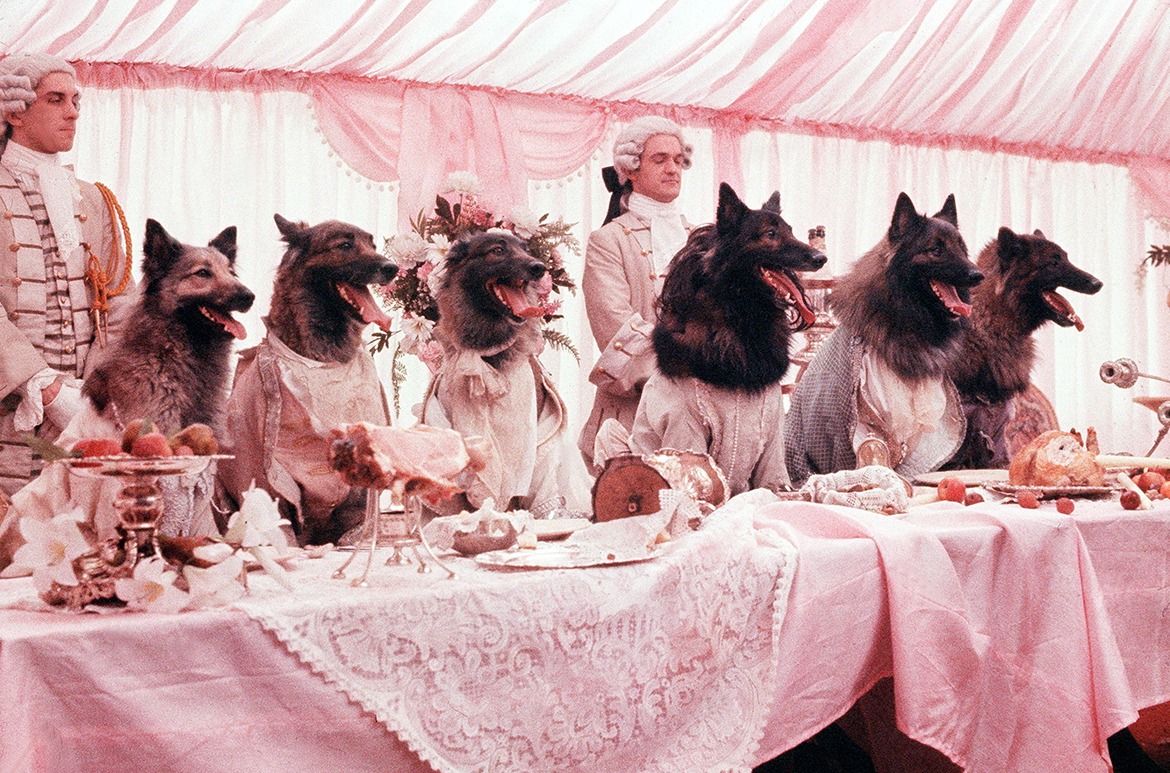
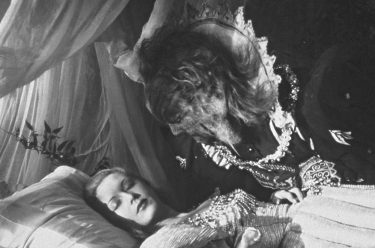

What age group is this event suitable for – 3yrs and up? We want to promote events for children – babies to eight years over the summer period in our subscription magazine Pedagogy+ – a magazine for early childhood teachers. Thank you
Hi Bernadette. Thank you for making contact.
The ‘Fairy Tales’ exhibition is family-friendly and we think children will love the mix of familiar characters and stories, costumes from popular films and some enchanting installations. There are a small number of artworks that touch on the darker and more grown-up themes in fairy tales and the exhibition includes excerpts from films classified PG in Australia.
There’s some information on the themes plus a handful of images from the exhibition at https://www.qagoma.qld.gov.au/exhibition/fairy-tales and of course in our regular weekly blog series on the exhibition at https://blog.qagoma.qld.gov.au/tag/fairy-tales
Coinciding with the exhibition ‘Fairy Tales’, there are two free artist-designed activities in GOMA’s Children’s Art Centre: ‘The Legend of the Rainbow Stag’ https://www.qagoma.qld.gov.au/exhibition/jakkai-siributr and ‘The Castle of Tarragindi’ https://www.qagoma.qld.gov.au/exhibition/natalya-hughes-the-castle-of-tarragindi and a free cinema program ‘Fairy Tales Cinema: Truth, Power and Enchantment’ https://www.qagoma.qld.gov.au/cinema/program/fairy-tales which includes a number of PG films that might be of interest including ‘The Wizard of Oz’, ‘Where the Wild Things Are’ and others.
If you’d like to look through the ‘Fairy Tales’ publication before making a decision to buy tickets, this is possible at the Fairy Tales Ticket Office.
We hope this helps, Regards QAGOMA
Who wrote the short animated film. Featured in fairy tales.
It featured a moon, a pig a little girl with a lollipop a house in the woods.
Hi Debra. Thanks for making contact, the clay animation ‘Dark Side of the Moon’ 2017 you refer to is by Nathalie Djurberg and Hans Berg. Regards, QAGOMA